This problem is actually quite interesting as it is a perfect example of a trade off between computation time and memory consumption.
From an algorithmic perspective finding the unique elements, and eventually computing only unique elements, can be achieved in two ways:
The algorithmic complexity depends on the size of the input N and on the number of unique elements U. The latter can be formalized also using the r = U / N ratio of unique elements.
The more-passes approaches are theoretically slower. However, they are quite competitive for small N and U.
The single-pass approaches are theoretically faster, but this would also strongly depends on the caching approaches and how they do perform depending on U.
Of course, no matter how important is the asymptotic behavior, the actual timings do depend on the constant computation time factors.
The most relevant in this problem is the func() computation time.
Approaches
A number of approaches can be compared:
not cached
pure() this would be the base function and could be already vectorizednp.vectorized() this would be the NumPy standard vectorization decorator
more-passes approaches
np_unique(): the unique values are found using np.unique() and uses indexing (from np.unique() output) for constructing the result (essentially equivalent to vectorize_pure() from here)pd_unique(): the unique values are found using pd.unique() and uses indexing (via np.searchsorted()) for constructing the result(essentially equivalent to vectorize_with_pandas() from here)set_unique(): the unique values are found using simply set() and uses indexing (via np.searchsorted()) for constructing the resultset_unique_msk(): the unique values are found using simply set() (like set_unique()) and uses looping and masking for constructing the result (instead of indexing)nb_unique(): the unique values and their indexes are found using explicit looping with numba JIT accelerationcy_unique(): the unique values and their indexes are found using explicit looping with cython
single-pass approaches
cached_dict(): uses a Python dict for the caching (O(1) look-up)cached_dict_cy(): same as above but with Cython (essentially equivalent to vectorized_cached_impl() from here)cached_arr_cy(): uses an array for the caching (O(U) look-up)
pure()
def pure(x):
return 2 * x
np.vectorized()
import numpy as np
vectorized = np.vectorize(pure)
vectorized.__name__ = 'vectorized'
np_unique()
import functools
import numpy as np
def vectorize_np_unique(func):
@functools.wraps(func)
def func_vect(arr):
uniques, ix = np.unique(arr, return_inverse=True)
result = np.array([func(x) for x in uniques])
return result[ix].reshape(arr.shape)
return func_vect
np_unique = vectorize_np_unique(pure)
np_unique.__name__ = 'np_unique'
pd_unique()
import functools
import numpy as np
import pandas as pd
def vectorize_pd_unique(func):
@functools.wraps(func)
def func_vect(arr):
shape = arr.shape
arr = arr.ravel()
uniques = np.sort(pd.unique(arr))
f_range = np.array([func(x) for x in uniques])
return f_range[np.searchsorted(uniques, arr)].reshape(shape)
return func_vect
pd_unique = vectorize_pd_unique(pure)
pd_unique.__name__ = 'pd_unique'
set_unique()
import functools
def vectorize_set_unique(func):
@functools.wraps(func)
def func_vect(arr):
shape = arr.shape
arr = arr.ravel()
uniques = sorted(set(arr))
result = np.array([func(x) for x in uniques])
return result[np.searchsorted(uniques, arr)].reshape(shape)
return func_vect
set_unique = vectorize_set_unique(pure)
set_unique.__name__ = 'set_unique'
set_unique_msk()
import functools
def vectorize_set_unique_msk(func):
@functools.wraps(func)
def func_vect(arr):
result = np.empty_like(arr)
for x in set(arr.ravel()):
result[arr == x] = func(x)
return result
return func_vect
set_unique_msk = vectorize_set_unique_msk(pure)
set_unique_msk.__name__ = 'set_unique_msk'
nb_unique()
import functools
import numpy as np
import numba as nb
import flyingcircus as fc
@nb.jit(forceobj=False, nopython=True, nogil=True, parallel=True)
def numba_unique(arr, max_uniques):
ix = np.empty(arr.size, dtype=np.int64)
uniques = np.empty(max_uniques, dtype=arr.dtype)
j = 0
for i in range(arr.size):
found = False
for k in nb.prange(j):
if arr[i] == uniques[k]:
found = True
break
if not found:
uniques[j] = arr[i]
j += 1
uniques = np.sort(uniques[:j])
# : get indices
num_uniques = j
for j in nb.prange(num_uniques):
x = uniques[j]
for i in nb.prange(arr.size):
if arr[i] == x:
ix[i] = j
return uniques, ix
@fc.base.parametric
def vectorize_nb_unique(func, max_uniques=-1):
@functools.wraps(func)
def func_vect(arr):
nonlocal max_uniques
shape = arr.shape
arr = arr.ravel()
if max_uniques <= 0:
m = arr.size
elif isinstance(max_uniques, int):
m = min(max_uniques, arr.size)
elif isinstance(max_uniques, float):
m = int(arr.size * min(max_uniques, 1.0))
uniques, ix = numba_unique(arr, m)
result = np.array([func(x) for x in uniques])
return result[ix].reshape(shape)
return func_vect
nb_unique = vectorize_nb_unique()(pure)
nb_unique.__name__ = 'nb_unique'
cy_unique()
%%cython -c-O3 -c-march=native -a
#cython: language_level=3, boundscheck=False, wraparound=False, initializedcheck=False, cdivision=True, infer_types=True
import numpy as np
import cython as cy
cimport cython as ccy
cimport numpy as cnp
ctypedef fused arr_t:
cnp.uint16_t
cnp.uint32_t
cnp.uint64_t
cnp.int16_t
cnp.int32_t
cnp.int64_t
cnp.float32_t
cnp.float64_t
cnp.complex64_t
cnp.complex128_t
def sort_numpy(arr_t[:] a):
np.asarray(a).sort()
cpdef cnp.int64_t cython_unique(
arr_t[:] arr,
arr_t[::1] uniques,
cnp.int64_t[:] ix):
cdef size_t size = arr.size
cdef arr_t x
cdef cnp.int64_t i, j, k, num_uniques
j = 0
for i in range(size):
found = False
for k in range(j):
if arr[i] == uniques[k]:
found = True
break
if not found:
uniques[j] = arr[i]
j += 1
sort_numpy(uniques[:j])
num_uniques = j
for j in range(num_uniques):
x = uniques[j]
for i in range(size):
if arr[i] == x:
ix[i] = j
return num_uniques
import functools
import numpy as np
import flyingcircus as fc
@fc.base.parametric
def vectorize_cy_unique(func, max_uniques=0):
@functools.wraps(func)
def func_vect(arr):
shape = arr.shape
arr = arr.ravel()
if max_uniques <= 0:
m = arr.size
elif isinstance(max_uniques, int):
m = min(max_uniques, arr.size)
elif isinstance(max_uniques, float):
m = int(arr.size * min(max_uniques, 1.0))
ix = np.empty(arr.size, dtype=np.int64)
uniques = np.empty(m, dtype=arr.dtype)
num_uniques = cy_uniques(arr, uniques, ix)
uniques = uniques[:num_uniques]
result = np.array([func(x) for x in uniques])
return result[ix].reshape(shape)
return func_vect
cy_unique = vectorize_cy_unique()(pure)
cy_unique.__name__ = 'cy_unique'
cached_dict()
import functools
import numpy as np
def vectorize_cached_dict(func):
@functools.wraps(func)
def func_vect(arr):
result = np.empty_like(arr.ravel())
cache = {}
for i, x in enumerate(arr.ravel()):
if x not in cache:
cache[x] = func(x)
result[i] = cache[x]
return result.reshape(arr.shape)
return func_vect
cached_dict = vectorize_cached_dict(pure)
cached_dict.__name__ = 'cached_dict'
cached_dict_cy()
%%cython -c-O3 -c-march=native -a
#cython: language_level=3, boundscheck=False, wraparound=False, initializedcheck=False, cdivision=True, infer_types=True
import numpy as np
import cython as cy
cimport cython as ccy
cimport numpy as cnp
ctypedef fused arr_t:
cnp.uint16_t
cnp.uint32_t
cnp.uint64_t
cnp.int16_t
cnp.int32_t
cnp.int64_t
cnp.float32_t
cnp.float64_t
cnp.complex64_t
cnp.complex128_t
ctypedef fused result_t:
cnp.uint16_t
cnp.uint32_t
cnp.uint64_t
cnp.int16_t
cnp.int32_t
cnp.int64_t
cnp.float32_t
cnp.float64_t
cnp.complex64_t
cnp.complex128_t
cpdef void apply_cached_dict_cy(arr_t[:] arr, result_t[:] result, object func):
cdef size_t size = arr.size
cdef size_t i
cdef dict cache = {}
cdef arr_t x
cdef result_t y
for i in range(size):
x = arr[i]
if x not in cache:
y = func(x)
cache[x] = y
else:
y = cache[x]
result[i] = y
import functools
import flyingcircus as fc
@fc.base.parametric
def vectorize_cached_dict_cy(func, dtype=None):
@functools.wraps(func)
def func_vect(arr):
nonlocal dtype
shape = arr.shape
arr = arr.ravel()
result = np.empty_like(arr) if dtype is None else np.empty(arr.shape, dtype=dtype)
apply_cached_dict_cy(arr, result, func)
return np.reshape(result, shape)
return func_vect
cached_dict_cy = vectorize_cached_dict_cy()(pure)
cached_dict_cy.__name__ = 'cached_dict_cy'
cached_arr_cy()
%%cython -c-O3 -c-march=native -a
#cython: language_level=3, boundscheck=False, wraparound=False, initializedcheck=False, cdivision=True, infer_types=True
import numpy as np
import cython as cy
cimport cython as ccy
cimport numpy as cnp
ctypedef fused arr_t:
cnp.uint16_t
cnp.uint32_t
cnp.uint64_t
cnp.int16_t
cnp.int32_t
cnp.int64_t
cnp.float32_t
cnp.float64_t
cnp.complex64_t
cnp.complex128_t
ctypedef fused result_t:
cnp.uint16_t
cnp.uint32_t
cnp.uint64_t
cnp.int16_t
cnp.int32_t
cnp.int64_t
cnp.float32_t
cnp.float64_t
cnp.complex64_t
cnp.complex128_t
cpdef void apply_cached_arr_cy(
arr_t[:] arr,
result_t[:] result,
object func,
arr_t[:] uniques,
result_t[:] func_uniques):
cdef size_t i
cdef size_t j
cdef size_t k
cdef size_t size = arr.size
j = 0
for i in range(size):
found = False
for k in range(j):
if arr[i] == uniques[k]:
found = True
break
if not found:
uniques[j] = arr[i]
func_uniques[j] = func(arr[i])
result[i] = func_uniques[j]
j += 1
else:
result[i] = func_uniques[k]
import functools
import numpy as np
import flyingcircus as fc
@fc.base.parametric
def vectorize_cached_arr_cy(func, dtype=None, max_uniques=None):
@functools.wraps(func)
def func_vect(arr):
nonlocal dtype, max_uniques
shape = arr.shape
arr = arr.ravel()
result = np.empty_like(arr) if dtype is None else np.empty(arr.shape, dtype=dtype)
if max_uniques is None or max_uniques <= 0:
max_uniques = arr.size
elif isinstance(max_uniques, int):
max_uniques = min(max_uniques, arr.size)
elif isinstance(max_uniques, float):
max_uniques = int(arr.size * min(max_uniques, 1.0))
uniques = np.empty(max_uniques, dtype=arr.dtype)
func_uniques = np.empty_like(arr) if dtype is None else np.empty(max_uniques, dtype=dtype)
apply_cached_arr_cy(arr, result, func, uniques, func_uniques)
return np.reshape(result, shape)
return func_vect
cached_arr_cy = vectorize_cached_arr_cy()(pure)
cached_arr_cy.__name__ = 'cached_arr_cy'
Notes
The meta-decorator @parametric (inspired from here and available in FlyingCircus as flyingcircus.base.parametric) is defined as below:
def parametric(decorator):
@functools.wraps(decorator)
def _decorator(*_args, **_kws):
def _wrapper(func):
return decorator(func, *_args, **_kws)
return _wrapper
return _decorator
Numba would not be able to handle single-pass methods more efficiently than regular Python code because passing an arbitrary callable would require Python object support enabled, thereby excluding fast JIT looping.
Cython has some limitation in that you would need to specify the expected result data type. You could also tentatively guess it from the input data type, but that is not really ideal.
Some implementation requiring a temporary storage were implemented for simplicity using a static NumPy array. It would be possible to improve these implementations with dynamic arrays in C++, for example, without much loss in speed, but much improved memory footprint.
Benchmarks
Slow function with only 10 unique values (less than ~0.05%)
(This is essentially the use-case of the original post).


Fast function with ~0.05% unique values


Fast function with ~10% unique values


Fast function with ~20% unique values


The full benchmark code (based on this template) is available here.
Discussion and Conclusion
The fastest approach will depend on both N and U.
For slow functions, all cached approaches are faster than just vectorized(). This result should be taken with a grain of salt of course, because the slow function tested here is ~4 orders of magnitude slower than the fast function, and such slow analytical functions are not really too common.
If the function can be written in vectorized form right away, that is by far and large the fastest approach.
In general, cached_dict_cy() is quite memory efficient and faster than vectorized() (even for fast functions) as long as U / N is ~20% or less.
Its major drawback is that requires Cython, which is a somewhat complex dependency and it would also require specifying the result data type.
The np_unique() approach is faster than vectorized() (even for fast functions) as long as U / N is ~10% or less.
The pd_unique() approach is competitive only for very small U and slow func.
For very small U, hashing is marginally less beneficial and cached_arr_cy() is the fastest approach.










